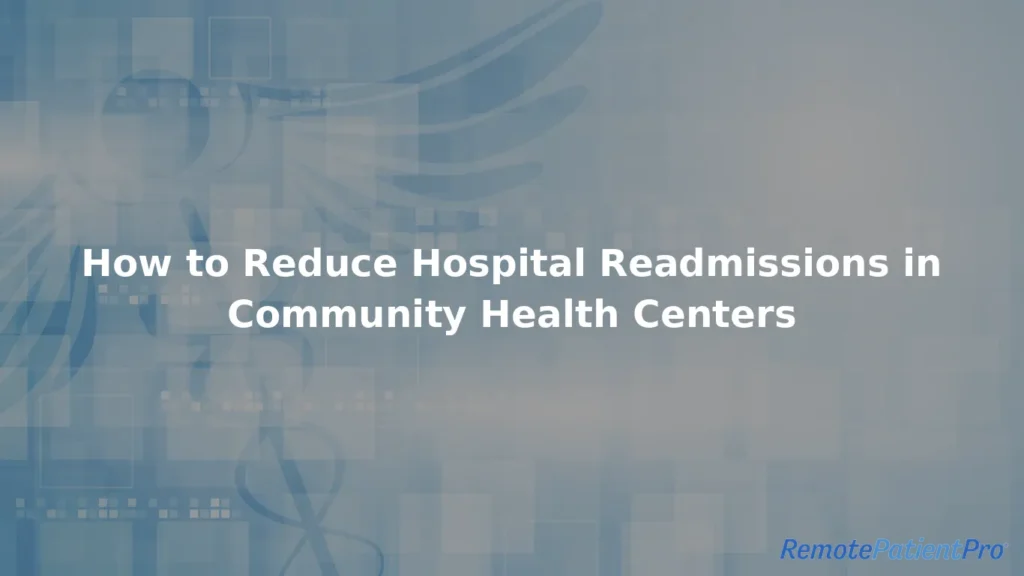How to Reduce Hospital Readmissions in Community Health Centers
Hospital readmissions can increase healthcare costs and strain limited resources. Understanding how to reduce hospital readmissions in community health centers is critical for improving patient outcomes and maintaining financial stability. Many of these circumstances stem from gaps in post-discharge care, unmanaged chronic conditions, and patients who do not follow medication or treatment plans.
By leveraging remote patient monitoring (RPM), better care coordination, and patient education, community health centers can be more proactive at reducing hospital visits and improving overall health.
Key Strategies to Reduce Hospital Readmissions
Improve Post-Discharge Follow-Up
Many readmissions occur because patients do not receive timely follow-up care. Scheduling post-discharge check-ins within 48 hours can help address medication concerns, symptoms, and care instructions before complications arise.
Implement Remote Patient Monitoring (RPM)
RPM allows healthcare providers to track patients’ vital signs and symptoms in real time, reducing the risk of complications that lead to hospital readmissions. One study shows how this technology and telemedicine can reduce hospital utilization.
Enhance Patient Education & Self-Management
Patients who understand their conditions and medications are less likely to be readmitted. Providing clear education, coaching, and digital health tools can empower them to become more involved.
Strengthen Care Coordination
Collaboration between primary care providers, specialists, and community health teams helps patients receive comprehensive post-hospital care. Integrated EHR systems and telehealth solutions can improve these transitions and reduce gaps in follow-up treatment.
Address Social Determinants of Health (SDOH)
Factors such as lack of transportation, food insecurity, and housing instability can contribute to readmissions. Community health centers should leverage partnerships with local organizations to provide resources that support long-term health.
How RPP’s RPM Platform Helps Prevent Readmissions
Our remote patient monitoring (RPM) platform provides community health centers with an effective tool to track and manage at-risk patients after hospital discharge.
- Real-Time Health Monitoring – Track vital signs such as blood pressure, glucose levels, and oxygen saturation.
- Custom Alerts & Notifications – Receive early warnings for potential complications, allowing for timely intervention.
- Seamless Integration With EHRs – Ensure smooth patient data exchange with existing healthcare systems.
- Enhanced Patient Engagement – Provide easy-to-use devices and mobile dashboards for better self-management.
Reduce Readmissions & Improve Patient Outcomes
By implementing RPM and proactive care strategies, community health centers can enhance patient outcomes, reduce hospitalizations, and optimize resource use.
Are you ready to do the same for your community? Schedule a demo and explore how our RPM solution can support your care team.

